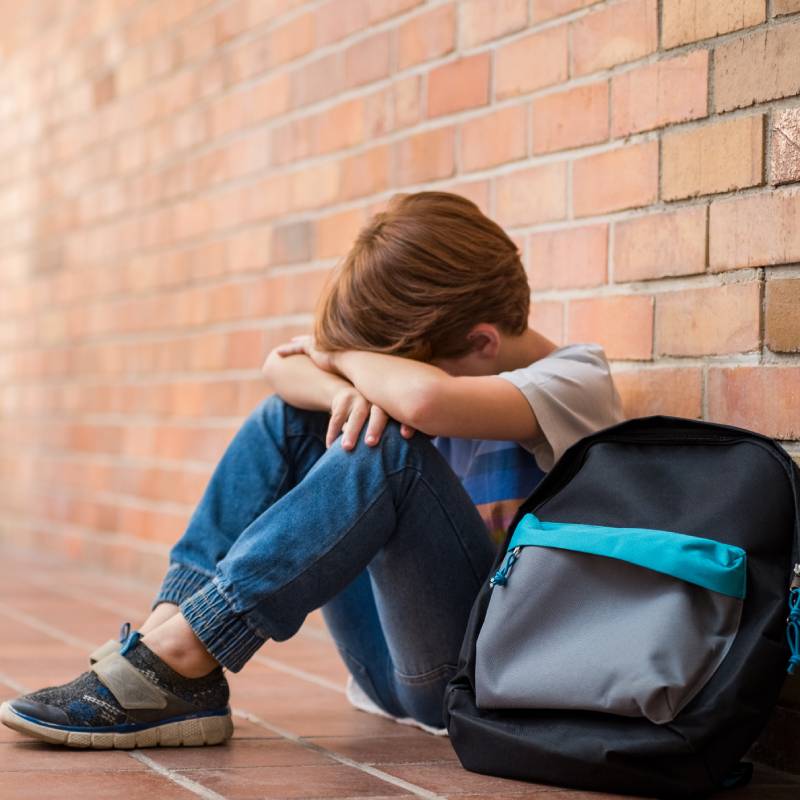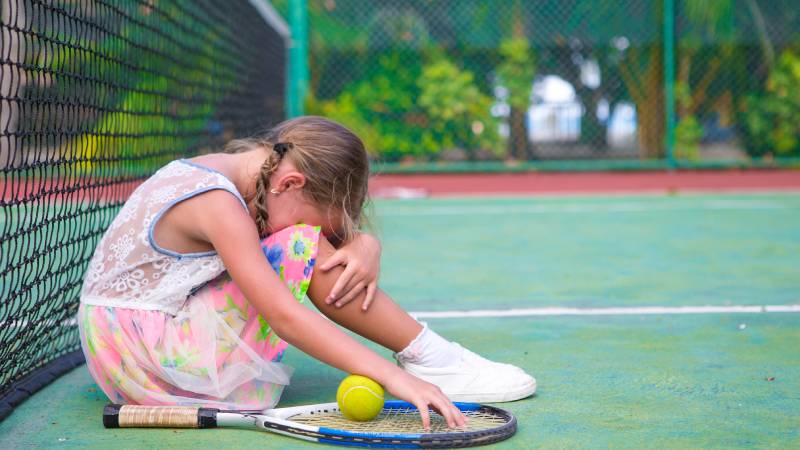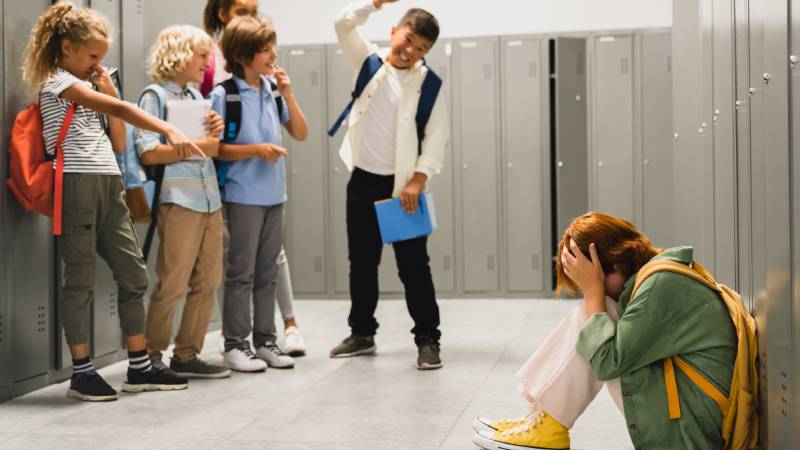Fighting bullying in sport: A complete guide

Bullying in sport, a persistent and worrying problem, extends far beyond mere competitive rivalries, infecting team spirit and undermining the very foundations of sporting ethics. In environments where performance and resilience are highly valued, bullying can easily disguise itself under the mask of motivation or tradition. However, its damaging effects on victims – ranging from anxiety and loss of self-confidence to far more serious consequences for mental health – call for immediate awareness and action.
Sport, in its noblest ideal, is a vehicle for positive values such as respect, perseverance and team spirit. However, the shadow of bullying threatens to tarnish these principles, transforming what should be a source of personal and collective enrichment into a theater of silent suffering. Faced with this scourge, it becomes imperative to arm ourselves with knowledge and effective strategies to protect our athletes, encourage a healthy sporting environment, and preserve the integrity of each discipline.
The aim of this comprehensive guide is therefore to provide an in-depth understanding of bullying in the sporting context, unravelling its complexities and highlighting tools and strategies to combat it effectively. In addition, it aspires to encourage the creation and strengthening of supportive communities that together build a solid foundation against bullying. By engaging in this reading, coaches, athletes, parents and all those involved in the sporting world are taking a decisive step towards transforming the sporting arena into a space where excellence rhymes with kindness and mutual respect.
Understanding bullying in sport
Sport is often considered a healthy and positive environment for children and adolescents [1] . Nevertheless, it should be noted that between 62% and 68% of young athletes have reported experiencing psychological violence in a sporting setting [2] .
Bullying in sport can take many forms: verbal, physical, psychological and even digital. It comes not only from teammates, but also from coaches, parents and spectators. Recognizing the signs of bullying is the first step to eradicating it. These signs include social isolation, decreased performance, anxiety before or during sports activities and mood swings.
Nature of bullying
Bullying in sport represents a major obstacle to the development of a healthy and inclusive environment for all participants. It takes many forms, each with profound impacts on individuals and groups within the sporting environment. Understanding the nature of bullying, its manifestations and consequences, is crucial to implementing effective preventive and reactive measures.
Bullying in sport transcends simple competitive interactions to manifest itself in many forms, often intertwined, exceeding the limits of healthy rivalry:
- Verbal bullying: This can include mockery, insults, constant and demeaning criticism of sporting skills, physical appearance, or any other personal trait. In basketball or soccer, for example, derogatory remarks about a player’s ability to shoot or defend can undermine confidence and self-esteem.
- Physical bullying: This takes the form of aggressive gestures ranging from pushing and shoving to more serious acts of violence. In judo or field hockey, excessively violent physical contact, outside the rules of the game, can be used to intimidate.
- Social bullying: aims to isolate the victim within his or her sports team or group, by spreading rumours, excluding him or her from group activities, or sabotaging his or her relationships with others. This can be particularly prevalent in team sports such as soccer or volleyball, where cohesion is essential.
- Cyberbullying: With the rise of social networks, bullying has found a new playground, enabling bullies to harass their victims online. Negative comments about sports performance posted on social networks can have a considerable impact on athletes of all disciplines. According to Statistics Canada, the prevalence of cyberbullying among adolescents aged 12 to 17 increases with age, rising from 20% to 27% between the ages of 12 and 17. This increase may be linked to the increase in Internet use with age, particularly on social media platforms [3].
In the sporting world, it also seems important to define the term “polyvictim”. This refers to an individual who has experienced multiple forms of bullying or violence, whether verbal, physical, social or cyber, throughout their sporting career [4]. These athletes face not just an isolated incident of bullying, but a series of repeated assaults that may come from a variety of sources, such as teammates, coaches or opponents. The condition of polyvictimization significantly accentuates the negative impacts on their psychological and physical well-being, hindering their sporting performance and their relationship with sport in general. Identifying and supporting polyvictims is essential to maintaining a healthy and inclusive sports environment, where the respect and safety of each participant is prioritized.
Causes and Impacts of Bullying
There are many causes of bullying in sport. They can result from the pressure of competition, the desire to dominate, the imitation of adult behavior, or the culture of a sport that values tenacity to the detriment of mutual respect:
- Pressure to succeed: Children and teenagers who feel pressure to succeed may be more likely to bully others to feel superior.
- Culture of silence: If victims of bullying are afraid to speak up, or if they think nothing will be done, bullying is more likely to continue.
- Lack of supervision: Bullying is more likely to occur when adults are not present to supervise [5].
The consequences of bullying, meanwhile, are severe, ranging from deteriorating mental health to dropping out of sport, eating disorders and self-inflicted injuries.
The effects of bullying on victims are profound and multidimensional. They include:
- Psychological effects: Continued exposure to bullying can lead to chronic stress, anxiety and episodes of depression. Bullied athletes may develop an irrational fear of failure [6] :
- Children and teenagers who feel the pressure to succeed may be more likely to bully others to feel superior. This could disrupt concentration and athletic commitment. 69% of athletes who had experienced different forms of violence reported high levels of psychological distress, almost double compared to the 36% who had experienced only psychological violence, and almost five times higher than the 15% of young people not exposed to violence [1].
- Among these polyvictims, 66% reported symptoms associated with post-traumatic stress disorder, as opposed to 44% of those who had only been victims of psychological violence, and 19% of those who had not been victims [1].
- Consequences on sports performance and team cohesion: Bullying can degrade individual performance and team harmony. A bullied soccer player may be reluctant to take initiative on the pitch, while a swim team’s dynamics may be disrupted by internal tensions linked to bullying.
Bullying statistics
- Approximately 10% to 15% of young people involved in sport report having been bullied during training, competitions or other sporting events [6].
- Between the ages of 12 and 17 and participating in sport-study programs in Quebec, a survey revealed that 54% of boys and girls playing soccer had faced physical bullying during play, and 53% had faced verbal bullying [6].
Recognizing the signs of bullying
Identifying the signs of bullying is essential for effective intervention:
- Behavioral signs in victims: Victims of bullying may withdraw socially, show reluctance to participate in sports activities, or exhibit sudden changes in performance. Signs of emotional distress such as irritability, insomnia or loss of appetite may also be observed.
- Behavioral signs in bullies: Bullies may display excessive aggression on and off the field, show dominance in their interactions with teammates, or be frequently involved in conflicts.
- Importance of vigilance: Coaches, parents and teammates play a crucial role in detecting and intervening early in cases of bullying. Coaches need to be attentive to team dynamics and player interactions, while parents need to communicate regularly with their children about their sporting experiences. Teammates can also serve as first responders by supporting victims and reporting bullying behavior to the appropriate authorities.
Tools and strategies to combat bullying
In the fight against bullying, a proactive and well-equipped approach is crucial to creating safe and healthy environments, where every individual can flourish without fear of being targeted or marginalized. Combating this social scourge requires a thorough understanding of effective tools and strategies that can be deployed by educators, parents, organizations and the victims themselves. Bullying prevention and intervention is not just about reacting to incidents, but also about creating a culture of respect, empathy and mutual support that actively discourages bullying behavior.
Combating bullying in sport requires a multifaceted strategy that includes awareness, education and intervention.
Awareness and Education
To transform attitudes and behaviors, awareness-raising is essential. For example, sports associations and teams could set up interactive workshops where athletes, coaches and parents learn together to recognize the signs of bullying and respond effectively. These sessions could include role-playing to simulate bullying situations and group discussions to share personal experiences and prevention strategies. In addition, integrating modules on diversity, inclusion and mutual respect into regular training sessions would help build more cohesive and empathetic teams. Initiatives such as the creation of team charters co-signed by players, who commit to maintaining a positive environment, or sessions led by sports psychology experts could reinforce this learning.
Coaches and sports associations are in a privileged position to drive this cultural change within sport. They are not only technical trainers, but also role models and facilitators of a climate of mutual respect. Setting up mentoring systems, where more experienced athletes coach new members, can foster a sense of belonging and reduce opportunities for bullying. Sports organizations can also adopt zero-tolerance policies against bullying, with clear reporting and sanction mechanisms. By taking concrete action, through training and education, but also by setting an example and establishing support structures, coaches and sports organizations can play a decisive role in eradicating bullying and promoting a truly inclusive and respectful spirit of sportsmanship.
Bullying prevention training
To create a climate of trust and safety, it is imperative that sports organizations adopt a zero-tolerance policy towards bullying, with clear guidelines for reporting and dealing with incidents. This could mean, for example, setting up an anonymous suggestion box or dedicated hotline where victims can voice their concerns. It is crucial that victims of bullying feel supported and encouraged to share their experiences, safe in the knowledge that they will be protected against any form of reprisal.
Bullying prevention training should be immersive and interactive. Imagine hands-on workshops where staff, coaches and athletes play out realistic bullying scenarios to better understand its impact and learn how to respond positively. This training could include sessions led by sports psychologists who teach non-violent communication techniques, constructive conflict resolution, as well as methods to increase self-confidence and resilience in athletes. Testimonials from people who have overcome bullying could serve as inspiring examples and reinforce learning.
The ultimate goal is to cultivate an environment where benevolence reigns supreme, and where everyone, whatever their role within the organization, is actively committed to maintaining an atmosphere of mutual respect and inclusion. Initiatives such as appointing benevolent ambassadors within teams, who ensure that these values are put into practice on a daily basis, or organizing regular community meetings to discuss progress and challenges encountered, could go a long way towards realizing this ideal.
Clear policies and reporting procedures in place
The creation and enforcement of explicit bullying guidelines is crucial. For example, these policies could be disseminated via handbooks distributed at the start of each sporting season, mandatory orientation sessions for new members, or prominently displayed in sports facilities to continually remind all stakeholders of their existence and importance. They should highlight expectations in terms of behavior, as well as the repercussions for violations, ranging from mandatory mediation to more severe sanctions such as temporary or permanent exclusion from the association.
These policies should incorporate a well-structured reporting system, for example, by establishing a committee of trust within the organization, made up of coaches and members elected by the athletes, to which incidents can be reported. This system could also be complemented by a secure online portal, guaranteeing anonymity while facilitating the reporting process for those who might otherwise be reluctant to come forward.
Particular emphasis should be placed on ensuring that once a case of bullying is reported, it immediately triggers a meticulous review procedure. Investigators trained specifically to deal with such situations could be appointed to ensure that each allegation is treated with the necessary seriousness and discretion. Depending on the results, corrective actions, such as targeted awareness-raising sessions, conflict resolution workshops for the parties involved, or other measures tailored to the seriousness of the incident, should be implemented without delay.
The aim of these approaches is twofold: not only do they aim to deal effectively with bullying incidents when they occur, but they also seek to prevent their occurrence by promoting a culture of respect and responsibility within the sporting community.
Fostering a respectful and inclusive sports environment
By raising awareness and educating the entire sports community, we can break the silence that often surrounds bullying in sport. By encouraging open dialogue and offering adequate support to victims, we can create a climate of trust where everyone feels valued and respected.
Let’s not forget that sport should be a source of fun, learning and personal development for everyone. By combating bullying, we can foster sportsmanship, team spirit and mutual respect, contributing to the development of each individual and to collective success.
Sources :
[1] LASALLE, M. (2023). Une majorité de jeunes athlètes sont exposés à la violence psychologique au Québec. Consulté à l’URL suivant : https://nouvelles.umontreal.ca/article/2023/06/08/une-majorite-de-jeunes-athletes-sont-exposes-a-la-violence-psychologique-au-quebec/
[2] Sport and Dev. (s.d.). Développement sain des enfants et des jeunes par le sport. Consulté à l’URL suivant : https://www.sportanddev.org/fr/thématiques/développement-de-la-jeunesse/développement-sain-des-enfants-et-des-jeunes-par-le-sport
[3] Statistique Canada. (2023). Les préjudices subis en ligne par les jeunes et les jeunes adultes : la prévalence et la nature de la cybervictimisation. Consulté à l’URL suivant : https://www150.statcan.gc.ca/n1/pub/75-006-x/2023001/article/00003-fra.htm
[4] Office québécois de la langue française. Polyvictimisation. Consulté à l’URL suivant : https://vitrinelinguistique.oqlf.gouv.qc.ca/fiche-gdt/fiche/26558470/polyvictimisation
[5]Tang, A. et al. (2021). Série « La psychologie peut vous aider » : L’intimidation chez les enfants et les jeunes. La Société canadienne de psychologie. Consulté à l’URL suivant : https://cpa.ca/fr/psychology-works-fact-sheet-bullying-among-children-and-youth/
[6] Parent, S. et D’Amours, C. (s.d). Intimidation en contexte sportif. INSPQ. Consulté à l’URL suivant : https://www.inspq.qc.ca/intimidation/jeunes/intimidation-en-contexte-sportif
Karl Demers

Fighting bullying in sport: A complete guide
This article sets out to deconstruct the phenomenon of bullying in sport, exploring definitions, underlying reasons and consequences.
Bullying is a complex issue that affects individuals in many contexts, including school, sports and online.
Bullying in sport is an issue that can seriously affect the well-being and performance of young athletes.


